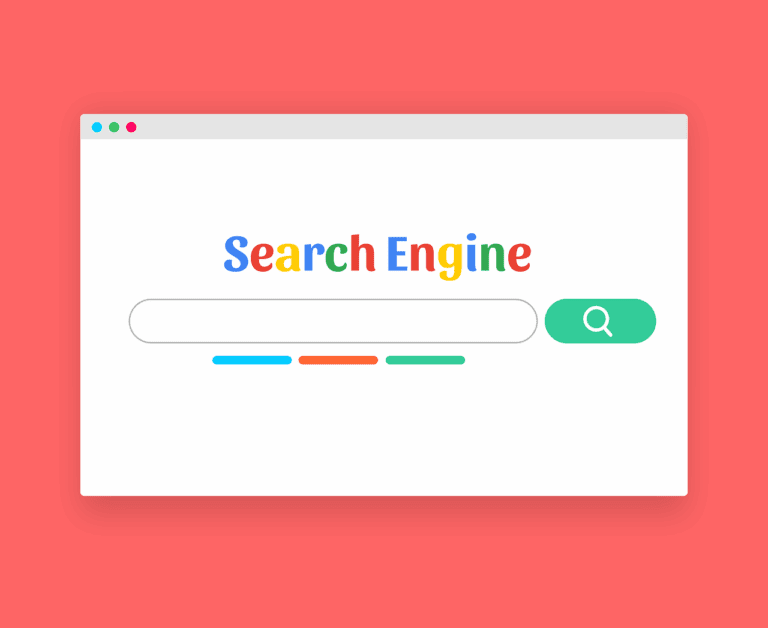Fuelling ambitious growth, attracting investors and launching a new product are common reasons software vendors and developers need to find new software customers. Regardless of the motivation, to attract new customers, vendors must engage in smart planning so budgets aren’t wasted and new customers are won cost-effectively and stick around for the long-term.
To find new software customers, vendors must research their market, identify their ideal customer and create a plan to reach and convert them using appropriate marketing channels.
Finding new software customers doesn’t happen overnight. Businesses that launch into marketing campaigns without doing any research and planning will quickly waste budgets with little to show for it. That’s why identifying who you want to target and planning campaigns go a long way when it comes to recruiting new customers.
As a content marketing and SEO agency that’s worked on over 100 campaigns, we know what it takes to run a campaign that generates leads and turns them into paying customers.
If you’re serious about generating new business we recommend following these planning activities before spending a penny of your marketing budget.
- STAGE 1 – Research Your Market
- STAGE 2 – Profile Your Customers
- STAGE 3 – Write a Solid Digital Marketing Plan
- Measuring Your Marketing Activity and Repeating Success
- Conclusion: To Find New Software Customers – Research, Plan & Action
STAGE 1 – Research Your Market
It’s likely that you already have a good idea of your market but doing your research to confirm assumptions and identify any new trends before launching into a big campaign is a vital step that can prevent simple mistakes and budget wastage.
The research or ‘audit’ phase can be completed in a few days with the right structure in place. Using some simple marketing models will ensure that you’re capturing the correct information and that your research is focused.
Putting the findings into an audit document gives everyone in the business visibility on what’s happening and allows you to carry out reviews to see which assumptions were correct and to identify changes in the market such as competitors and customer behaviour.
Create an Audit Document
For software businesses that are following a market penetration strategy, selling more of the same product into the same markets, the audit process will be relatively simple as you will already have good knowledge of your market. For those selling new products or that plan to sell into new markets the audit process will take longer and will cover a lot more ground.
Every audit document should cover some simple areas including;
| External Audit | What is happening in your market? |
| PESTLE | Political, economic, socio-cultural, technological, legal and environmental factors that could influence your decision making |
| Competitors | Who are your direct competitors and what are they doing? |
| Market Trends | What are the trends you’ve identified? |
| Internal Audit | What resources do you have? Do you have a good team? Do you need to upskill or fill gaps? |
| Current Objectives | What are your current business and marketing objectives? |
| Current Performance | Are you hitting your goals? |
STAGE 2 – Profile Your Customers
It can be easy to think that there’s a huge market for your software solution or services. Even if there is, targeting everyone with the same message will not yield the results you want and is a sure-fire way to spend a lot of money and not get any results. This is referred to as the ‘scatter-gun’ approach as is not a recommended method for finding new software customers.
Instead, you should identify what your perfect customer looks like. There are many ways to do this including looking at your best existing customers and thinking about what makes them great to work with. Another approach is to look at the customers of your competitors and identify what it is about them that would make them the perfect customer for your business.
Pulling these traits together into a target company profile will ensure that when it comes to spending money on marketing you are only targeting customers that you want to do business with, that will be the most profitable and that are likely to stick around for the long term.

Create ‘Ideal Company’ Profiles
The process of identifying this ‘perfect customer’ doesn’t need to be long and drawn out, but it is essential for running a successful marketing campaign to find new software customers. There are 2 types of profiles that you will need to create, company profiles and stakeholder profiles.
A company profile has details about the type and size of the company that would buy your software or services. Information should include geographic location, company turnover, number of employees, the market they operate in, the age of the company and the existing software they use.
If your business sells into different vertical markets then it’s likely you will have a number of different company profiles. This process of ‘segmentation’ helps to narrow down the wider market until you can really identify which types of companies have the greatest need for your product or service.
Targeting companies that are most likely to do business with you will ensure that your marketing budget is spent effectively and will deliver a greater return.
Create Customer Profiles
For each company profile, you should create customer profiles. A stakeholder profile identifies everyone within that type of company that influences the purchase. Depending on the type of software this could be the managing director, sales director, finance director and sales reps.
Having identified the stakeholders each profile should include job title, level of influence, motivations for purchase, key pain points, favourite websites and favourite social media channels. More attributes can be added and we’ve included a template stakeholder profile that you can use and develop for your own purposes.

These stakeholder profiles are a mixture of information that you know and educated assumptions. As you begin to make contact with these stakeholders you can update the profiles as you go so every interaction you have becomes a source of new information you can use to better understand your customer.
STAGE 3 – Write a Solid Digital Marketing Plan
With profiles in place, you already have a lot of the information required to create an accurate digital marketing plan detailing how you will find, reach and engage new software customers.
In comparison to before where a company might market to a large audience with a generic message, you now have the information needed to craft personalised messages that you know your target audience will respond to (and the channels you need to use to deliver them).
Writing a marketing plan can seem like a time-consuming task, especially if all the information is already in your head. However, it’s well documented that businesses with a written strategy are 313% more likely to report success. The argument for writing a plan is much greater than the argument for not writing one.
Write A Plan To Find New Software Customers
The customer profiles form a critical part of the marketing plan but other information is required to give context and to outline what marketing activity will be carried out.
A marketing plan should be written in a way that anyone in your marketing and senior management team can pick it up and understand. The structure and the information that’s included is therefore really important. your plan should include these core headings:
| Executive Summary | This should give basic details about the company and background, an overview of industry trends and buying behaviour, current target markets and key marketing and promotional channels. Much of this can be taken from your market audit. |
| SMART Objectives | Include top-line company objectives for the next 12, 24 and 60 months. Also, include marketing specific objectives such as ‘Generate 12 new customers through digital marketing channels over the next 12 months. |
| Marketing Strategy | A brief overview of the marketing strategy and justification for choosing the strategy should be included here. This could be further market penetration – selling existing products into existing markets or market development – selling existing products into new markets. |
| Target Customers | This section draws on the customer profile work. Although the profiles don’t need to be included in the plan document you should specify which segments of the market you are targeting and make reference to the customer profile documents. |
| Outline Marketing Activity | Again, the customer profiles will largely define what the marketing activity will be. If your customers mainly use LinkedIn that will be a key marketing channel. You can use the 4P’s here to outline, for each target customer, what the product offer is, any special pricing, the place they will purchase (online, over the phone) and the promotional activity such as social media, trade shows and content marketing. |
| Budget | This should be the budget for all of the marketing activity contained within the marketing plan. It will usually cover 12 months and it should detail how the budget is allocated per channel or activity. For example, 20% on Facebook digital advertising, 50% on professional content writers and 30% on trade shows. |
| KPI’s & Success Metrics | Every plan should finish with how you plan to measure success. KPI’s can relate to the main marketing objectives – 12 customers in 12 months could be 4 a quarter. You should also set metrics for measuring marketing activity – targets for Cost Per Click, Organic Traffic and Cost Per Acquisition are common success metrics. |
How Long Should a Marketing Plan Be?
From our experience of writing marketing strategies and digital marketing plans, a digital marketing plan for a small to medium-sized software business doesn’t need to be more than 5 or 6 pages. The information should be concise and to the point with any important additional reading available in the appendices.
Supplementary documents that may need to be created and included are:
- Company and customer persona documents
- Timeline of marketing activity
- Content marketing plan
- Details of keyword research
- Social media post timeline
Writing a plan that outlines when activity will be carried out ensures that everyone in the business is aligned and prepared for upcoming marketing activities. If you’re working with a marketing agency it’s useful to have written confirmation of what will be happening and when so that you can review this at your monthly or quarterly meetings.
A lot of the content of your plan will come out of the work you have done on creating the customer profiles. If you have put time into creating profiles then you will already know which messaging will resonate with your audience and which channels you need to use to connect with them.
Plan Marketing Activity To Find New Software Customers
The marketing plan will tell you who, what, when and why but you still need to answer how you will find and reach your customers in more detail. To effectively implement a marketing strategy and find new customers, vendors must consult the marketing funnel model and its 4 stages: awareness, consideration, convert and delight.
It’s well documented that customers go through each stage when making a B2B purchase so inbound marketing tactics can be mapped to each stage of the funnel. Doing this helps vendors to create the right content and use the right channels at the right time to build and maintain prospect relationships until they are ready to engage with sales.
| Funnel Stage | Buyer Journey & Solution | Activities |
| Awareness | The aim here is to help the prospect identify what their problem is. For example, a blog post titled ‘how to increase eCommerce conversions’ that suggests great product information is critical to eCommerce conversion rates might lead the prospect to review their product information, realise that it isn’t up to scratch, and to do some research into different types of software to solve their pain point. | SEO blog postsSocial MediaGuest blog posts |
| Consideration | Now the prospect is aware of their problem they will actively look for a solution. Good content for this stage is ‘What to consider when choosing product information management software’. Helping to educate the prospect and not pushing them to speak with sales means vendors build trust, authority and ultimately better relationships. This means that when a prospect does engage with sales they are more likely to convert. | eBooksWebinarsInteractive toolsEmail automations |
| Convert | By now the prospect has likely consulted a number of sources and if vendors got in early enough they have earned the right to push for the sale. Now vendors should highlight the USPs of their solutions, share case studies with relatable facts and figures such as ROI and productivity gains and use online product demos to bring static website content to life. It’s time to close. | Case studiesProduct demosTestimonialsSocial proofAwardsPrice comparisons |
| Delight | After onboarding, customer service and project teams should generate content ideas for new customers. ‘Getting the most from your product information management software’ is a good example of this. Plus, customer referrals are the holy grail of new lead generation. | How to guidesFeature updatesPersonal emailsReview requestsReferral schemes |
The journey that a prospect takes to purchase is rarely linear and so being able to identify where they are in the funnel is crucial. It’s common for SaaS vendors to combine inbound marketing and outbound marketing to gather information and nurture prospects down the funnel. Lead scoring is often used to determine how engaged a lead is and when the right time is for sales to make contact.
Here are 103 marketing ideas for technology companies that you can start using today.

Measuring Your Marketing Activity and Repeating Success
With a marketing plan in place, you are much better prepared to carry out effective marketing activity and find new software customers. One area that people often forget about is how they will measure the success of their strategy and campaigns.
If you have followed the planning process you will have clear objectives in place such as revenue targets and leads generated. However, other metrics that relate to your specific marketing activity are just as important.
If you are spending money on digital advertising you will need to know which platform is performing best, which is delivering the lowest cost per lead and which platforms generate the highest quality leads. This can also be applied to social media, blog posts and PR efforts.
We recently wrote a blog post covering 12 of the most common inbound marketing performance metrics businesses can use to measure the success of their marketing campaigns.

Conclusion: To Find New Software Customers – Research, Plan & Action
It’s easy to think that if you have a great product you will naturally attract a wave of new customers but with the software landscape growing increasingly more competitive it’s important to have a niche and identify people that are most likely to buy your software or services.
The planning process doesn’t need to be a long one. Sometimes it just takes a few days to write down and document your current strategy so it can be reviewed and tweaked. Other times might require more in-depth research and planning.
Either way, having a written strategy that covers the objectives you want to achieve, who your ideal customers are and the marketing activities you will use to reach them will give you a much higher chance of success.
If you need any advice or would like to know more about our marketing planning and digital marketing services please get in touch. We’d love to hear about the plans for your business and get you on the road to success.





